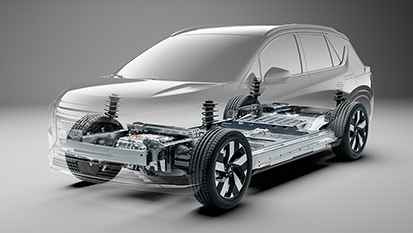On March 23, GAC Mitsubishi’s new pure electric SUV, the Airtrek, was officially launched with the following features:
- Adopts the Dynamic shield design language;
- Equipped with a 69.9 kWh ternary lithium battery pack, achieving a range of 520 km under CLTC conditions, and a maximum torque of 350 N·m;
- Three-in-one integrated electric drive technology with a maximum motor power of 165 kW and an estimated accuracy of 3% for remaining battery life;
- Aluminum alloy pure electric platform with a front-rear weight ratio of 50:50, a wheelbase of 2,830 mm, and a rear longitudinal length of over 1,000 mm;
- The 12.3-inch instrument panel supports AR real-time navigation;
- Supports digital car keys, allowing for touchless automatic door opening, remote control of air conditioning and starting via the M-SPACE app;
- Supports Level 2 assisted driving functions;
- Pioneer version at CNY 199,800, Hardcore version at CNY 229,800.

Airtrek is equipped with AR real-time navigation, and the 12.3-inch instrument panel can display street views in real-time and overlay virtual route indicators. Airtrek also supports a full-scenario intelligent voice interaction system that uses iFlytek XTTS voice technology, supporting source localization and deep vehicle control. Furthermore, the M-SPACE app allows for remote control of vehicle intelligence, ambient lighting, wireless phone charging, rest mode/heavy rain mode, AIR-Clean new air purification system, and other functions.

Mitsubishi and Toyota have chosen to cooperate with GAC and BYD respectively for the development of their first batch of new energy vehicle models. Although Japanese automakers have accumulated deep technical knowledge in hybrid powertrains, they have been held back when it comes to pure electric vehicles due to the advantages of gasoline-powered and hybrid models. Major automakers have already begun to layout in the field of power batteries and production materials, with fierce competition for the development and launch of pure electric vehicle models, and the performance of Japanese automakers in the era of electric vehicles remains to be tested by their products.
This article is a translation by ChatGPT of a Chinese report from 42HOW. If you have any questions about it, please email bd@42how.com.
